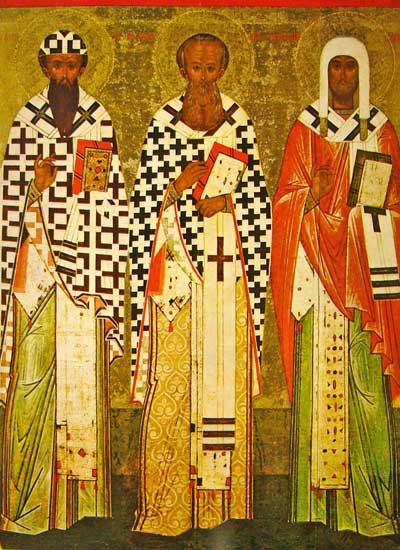Seal of the Fathers

St. Cyril was a bishop in Alexandria at the turn of the fifth century when his orthodoxy played a pivotal role in the Church’s confession against the Nestorian heresy. Not only did Cyril leave a legacy by overseeing the council which deposed Nestorius, but his various writings also built on the work of the Church fathers before his time in order to reaffirm the faith of Nicaea, earning him the moniker “seal of the fathers.”
St. Cyril was born was born around 376 to a well-to-do Christian family. When he was young, his parents set him up to receive a premier education in Alexandria where his uncle served as archbishop. After years of study in the monastery and his ordination in 403, Cyril followed in his uncle’s footsteps and was appointed bishop of Alexandria in 412 following Theophilus’s death.
Like many a bishop, his years in office were filled with theological and political controversy. But Cyril was quite unique in how he brought to the forefront the years of Church history, councils, and creeds that had come before him and synthesized them in his writings and in his defense of the orthodox faith against Nestorius, a bishop in Constantinople who falsely separated the two natures in Christ. Cyril’s response ro Nestorius ultimately answered the question, “What does it mean that the Word became flesh,” reaffirming and clarifying the hypostatic unity of Christ’s person, both God and man. He believed the divine nature doesn’t act by itself in miracles, resurrection, etc. and the human nature isn’t born, doesn’t hunger, die, etc. by itself, but Jesus is one person who acts through the communication of the divine and human attributes as a single subject. Cyril led the ecumenical council of Ephesus in 431, which deposed Nestorius and condemned him as a heretic.
Cyril died in the year 444 as bishop of Alexandria after 32 years of theological service dedicated to parsing out the doctrine of Christ and the Trinity. The date of his death, June 27th, marks the date of his commemoration in the West, when we as Lutherans give thanks to God for his staunch defense of the orthodox faith.

Brief History
Despite his prominent role in Church history, the West didn’t acknowledge St. Cyril on the sanctoral calendar until the 1800s. In fact, he has been a more controversial figure until recently when new scholarship has done much to recover his image.
But Cyril’s contributions were long known throughout history, especially by the Lutheran reformers. Perhaps somewhat surprising is that after St. Augustine, Cyril of Alexandria is the most quoted church father in our Lutheran Confessions. Given the theological climate of his time, it comes as no surprise that he plays such a strong role in the Confessions, shedding light on how we rightly understand Christ’s natures. After all, while Nestorius lived centuries ago, the heresy that bears his name lives on in new iterations through the years. For the Lutheran reformers, this was most recognizable in the theology of John Calvin, who divided the natures of Christ in the Lord’s Supper. Yet even before this controversy with the Reformed, the Lutherans quote Cyril in Article Ten of the Apology:
“Nevertheless, we do not deny that we are joined spiritually to Christ by true faith and sincere love. But that we have no mode of connection with Him, according to the flesh, this indeed we entirely deny. And this, we say, is altogether foreign to the divine Scriptures. For who has doubted that Christ is in this manner a vine, and we the branches, deriving thence life for ourselves?”
So now we can join with the many Lutherans who have gone before us in thanking St. Cyril for his articulate confession and the way in which he has paved the way for our own doctrine.

Collect
Grant, we beseech Thee, Almighty God: that, celebrating the heavenly bithday of Blessed N., Thy Martyr, we may, by his example, be emboldened in our faith toward Thee; through Jesus Christ our Lord, who liveth and reigneth with Thee and the Holy Ghost: ever one God, world without end. Amen.
Lessons
Resources
Issues, Etc. interview with the Rev. Dr. James Busher on St. Cyril of Alexandria
Propers found in Daily Divine Service Book: A Lutheran Daily Missal, edited by the Rev. Heath Curtis
References:
1. Boyle, Jefferey. “Celebrating Christ the King in Zechariah with St. Cyril of Alexandria,” The Lutheran Witness. 2021. Retrieved from https://witness.lcms.org/2021/celebrating-christ-the-king-in-zechariah-with-st-cyril-of-alexandria/
2. Issues Etc. interview with the Rev. Dr. James Busher on St. Cyril of Alexandria
Images:
1. S. Cyrille d’Alexandrie, Jacques Callot, France, 1636.
2. Saints Athanasius and Cyril of Alexandria, Vatican Library, Rome 985.
3. Cyril of Alexandria, Athanasius of Alexandria, Leontiy of Rostov, 15th century.



